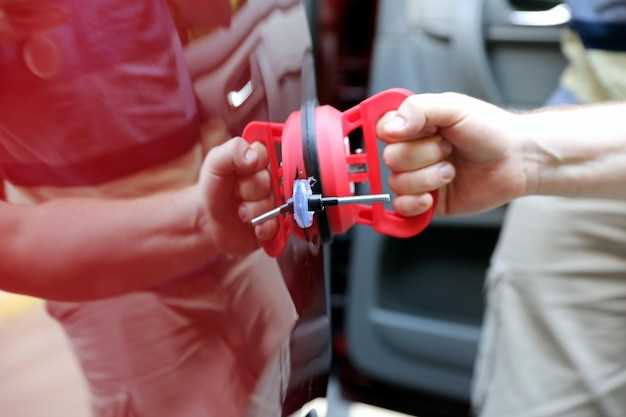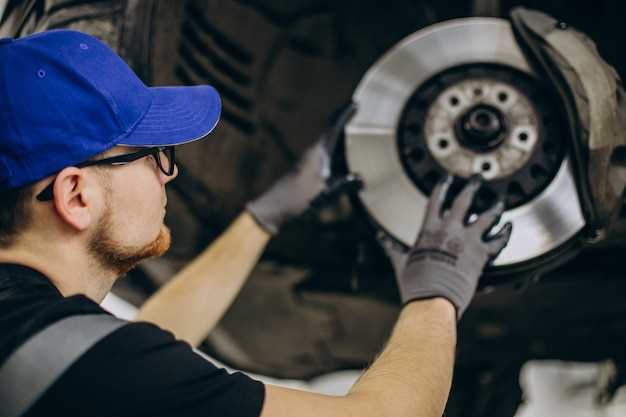
When it comes to maintaining your Land Cruiser, ensuring the functionality of your braking system is paramount. The brake pads are a crucial component in this system, providing the necessary friction to slow down and stop your vehicle safely. Regular inspections and timely replacements can prevent unwanted issues, ensuring both your safety and the longevity of your vehicle.
This DIY replacement guide is tailored specifically for Land Cruiser owners who want to take control of their maintenance. Replacing the brake pads may seem daunting, but with the right tools and guidance, you can accomplish this task efficiently and effectively. From understanding the types of brake pads available to correctly installing new ones, this guide covers all the essential steps.
Throughout this article, we will delve into the best practices for replacing your Land Cruiser’s brake pads, including tips on identifying wear patterns, choosing high-quality materials, and ensuring proper installation. By the end, you will possess the knowledge and confidence to tackle this essential maintenance task yourself, saving both time and money in the process.
Selecting the Right Brake Pads for Your Land Cruiser
Choosing the correct brake pads for your Land Cruiser is essential for ensuring optimal braking performance and safety. The selection process begins with understanding the type of driving you do. If you frequently drive in harsh conditions or tow heavy loads, consider performance-oriented brake pads designed for such use.
There are various types of brake pads available, including ceramic, semi-metallic, and organic. Ceramic brake pads are known for their quiet operation and low dust production, making them a great choice for everyday driving. Semi-metallic pads provide better heat dissipation and are suitable for more aggressive driving styles. Organic pads, while quieter, may wear out faster and produce more dust.
Compatibility is another crucial factor. Ensure the brake pads you choose are specifically designed for your Land Cruiser model and year. This information can typically be found in the vehicle’s manual or by consulting with a trusted parts supplier.
Lastly, consider the manufacturer’s reputation and customer reviews. Quality brake pads from reputable brands offer reliable performance and longevity. Reading user experiences can help you make an informed decision, ensuring a successful brake replacement that maintains your vehicle’s performance and safety.
Step-by-Step Process for Removing Old Brake Pads

Removing old brake pads is a crucial part of brake maintenance. Follow these steps to ensure a safe and effective removal process.
1. Gather Necessary Tools: Before you begin, make sure you have the following tools: a jack, jack stands, a lug wrench, a brake pad spreader or C-clamp, a socket set, and a torque wrench. Having everything on hand will streamline the process.
2. Prepare the Vehicle: Park your Land Cruiser on a flat surface and engage the parking brake. Loosen the lug nuts on the front wheels while the vehicle is still on the ground, but do not remove them completely at this stage.
3. Lift the Vehicle: Use the jack to lift the front of the vehicle. Once elevated, securely place jack stands under the vehicle to prevent it from falling while you work. Now, fully remove the loosened lug nuts and take off the wheels.
4. Access the Brake Caliper: Locate the brake caliper, which houses the brake pads. Using the socket set, remove the bolts securing the caliper to the bracket. Be careful not to damage the caliper or its components during this step.
5. Remove the Caliper: Gently slide the caliper off the rotor. It’s important to support the caliper so it doesn’t hang by the brake line. You can use a hook or a bungee cord to secure it to the suspension or frame.
6. Extract Old Brake Pads: With the caliper removed, you can access the old brake pads. Simply slide them out from the caliper bracket. Inspect the pads for wear; if they are excessively worn, it confirms the need for replacement.
7. Clean the Braking Surface: Before installing new pads, clean the rotor surface with brake cleaner to ensure optimal contact with the new pads. This step can help prevent noise and improve braking performance.
8. Check for Additional Issues: Inspect the caliper and rotor for any signs of damage or wear. If necessary, replace or service these components before installing new brake pads.
By following these steps, you can effectively remove old brake pads and prepare for a successful replacement. Always remember to work safely and consult a professional if you encounter any uncertainties during the process.
Installing New Brake Pads and Final Adjustments

Once the old brake pads have been removed, it is time to proceed with the installation of the new pads. Begin by ensuring that the new brake pads are compatible with your Land Cruiser model. Carefully align the pads with the caliper bracket, making sure that the friction material is facing the rotor.
Step 1: Install the Brake Pads
Insert the new pads into the caliper bracket one at a time. Ensure that they fit snugly and securely. If your brake system uses shims, make sure to install them as indicated in the manufacturer’s instructions. This will help reduce noise and vibration during operation.
Step 2: Reinstall the Caliper
Once the pads are properly placed, gently slide the caliper back over the new pads. Align the bolt holes and insert the caliper mounting bolts. Tighten these bolts to the manufacturer’s specified torque settings to ensure proper clamping force on the pads.
Step 3: Final Adjustments
After reinstalling the caliper, it is crucial to check the brake fluid level in the reservoir. If the fluid level has risen due to the new pads being thicker, you may need to adjust it accordingly. Additionally, it is advisable to pump the brake pedal a few times before driving the vehicle. This will help seat the pads against the rotor and ensure optimal performance.
Important: Always check for any unusual noises or behaviors while applying the brakes shortly after installation. If you notice any irregularity, inspect your installation to confirm everything is properly aligned and secure. Regular maintenance and proper installation of new pads play a vital role in ensuring the safety and efficiency of your braking system.
